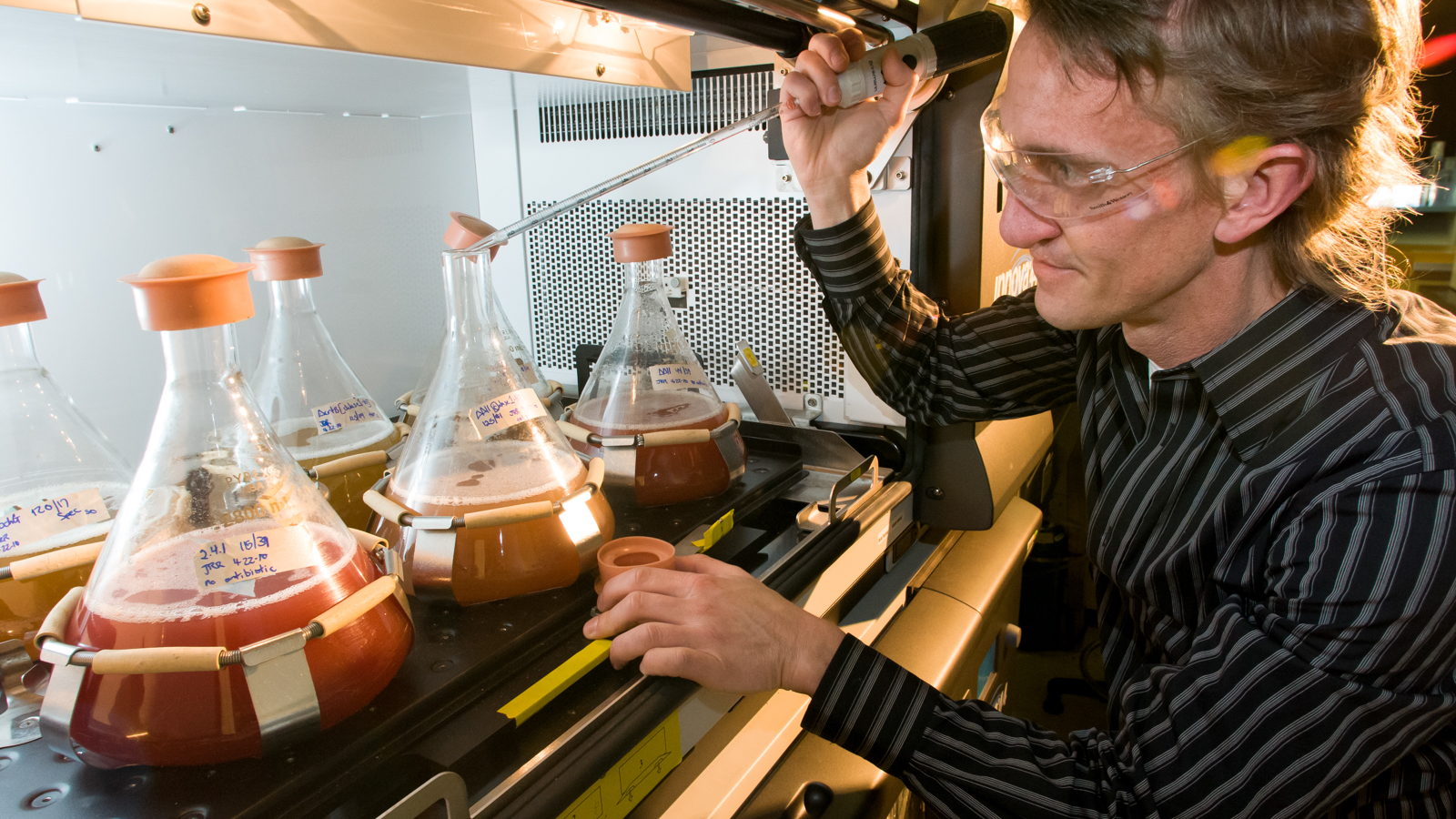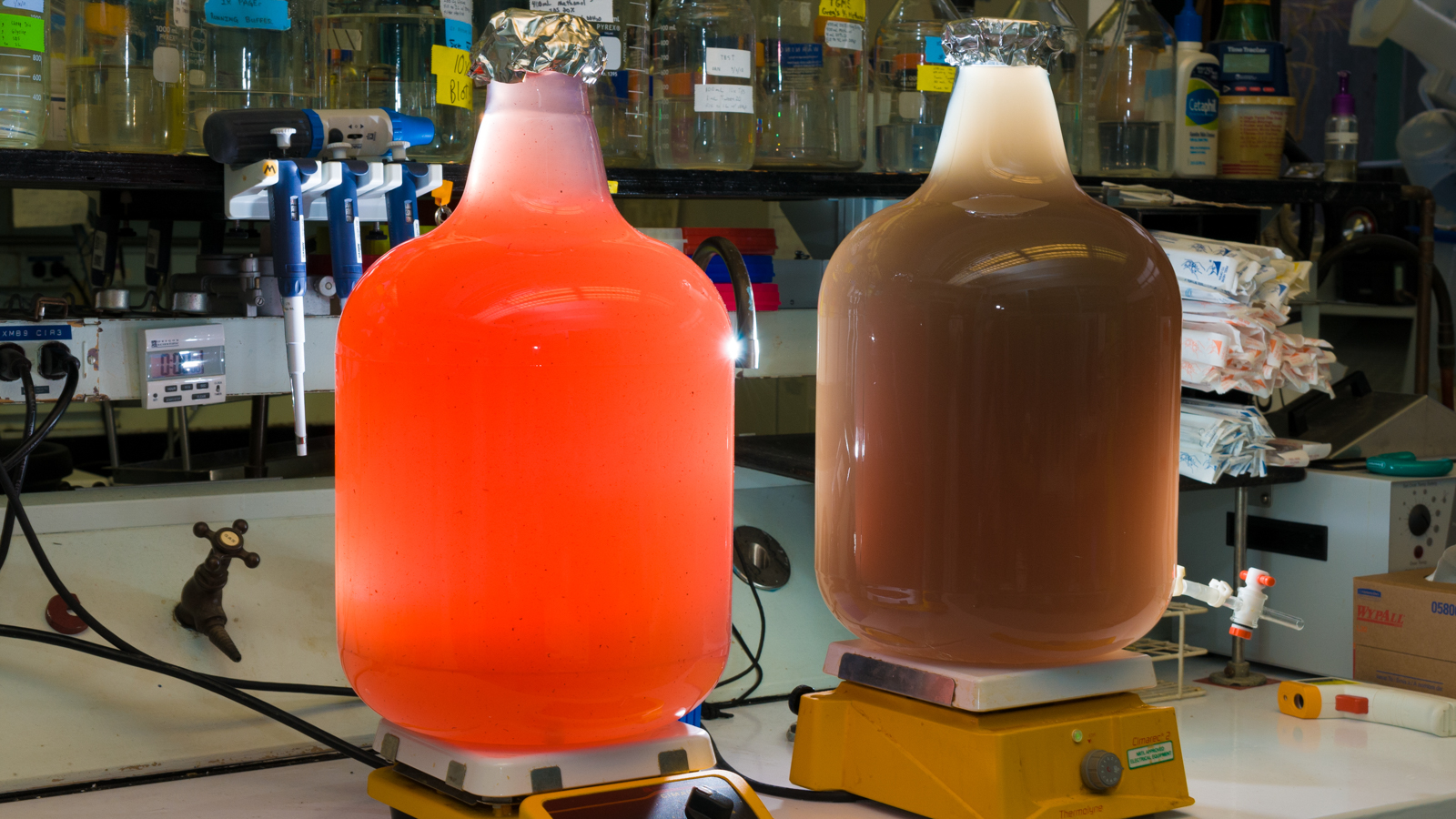
The Endurance Bioenergy Reactor is a simple, easy-to-use portable system that puts bacteria to work on a variety of biological waste to produce fuel that can go directly into diesel engines and generators.
A team of Argonne scientists led by biophysicist Phil Laible have developed bioengineered photosynthetic bacteria capable of producing an alcohol called phytol from a variety of sources, including wood pulp, leftover corn stalks, food waste, and latrine waste. Once separated from the fermentation broth, phytol serves as a surrogate for diesel fuel that can be used alone or in blends to power generators or vehicles.
With chemical and physical properties similar to diesel fuel, phytol is considered a “drop-in ready” biofuel, meaning it is ready to go directly into diesel engines and generators without any further refinement.
With insight from Air Force Fellow Major Matthew Michaud, Argonne researchers incorporated this groundbreaking discovery into the design of the Endurance Bioenergy Reactor. The process begins in a large fermentation vessel tank; once it’s filled, the engineered organism begins converting waste to energy. The bacteria are freeze-dried and shipped along with the reactor hardware, so the operator can simply open the package of bacteria and drop them into the main tank. The reactor can use a variety of carbon and energy sources to make fuel.
A single reactor takes between two and four days to convert waste into fuel, but the system can be modified to generate fuel continually. The system can produce 25 to 50 gallons of biofuel a day.
This promising technology provides a viable alternative for military and civilians who need reliable power sources when they are not near a power grid. For military applications, the reactor prolongs operations, reduces costs, and improves safety by decreasing reliance on supply chains and eliminating dangerous convoy missions to deliver more fuel. According to an Army study, one in eight U.S. military casualties in Iraq happened during fuel convoys.
The system’s mobility and simplicity also make it a logical choice for energy in remote and disaster areas. The Endurance Bioenergy Reactor is a rapidly deployable tool for humanitarian activities around the world, providing energy when and where it’s needed.
“If the idea of converting on-site waste into a drop-in ready fuel with a small mobile unit seems outrageous, then why does moving refined fuel through a weak infrastructure make sense?” said Laible and Michaud. “Plentiful components to make convenient fuel are already at hand. The day has come for something as sensible as the Endurance Bioenergy Reactor.”
About a third of food produced for human consumption is lost or wasted globally—about 1.3 billion tons per year. We could turn some of that food into biofuels with the Endurance Bioenergy Reactor.
Source: Food and Agriculture Organization of the United Nations

